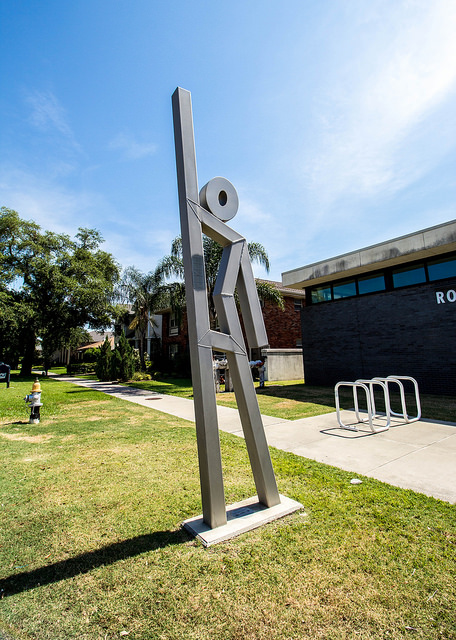
By Laura Zabel
Filling sandbags is community ritual in North Dakota. Almost every Spring, the rain and melting snow that attempt to flood the banks of the river threaten the economy, safety and, in some years, the very existence of the towns like Fargo along the Red River Valley. In an exhausting race against time, neighbors come together and shovel sand into thousands of bags to keep the disaster at bay. They wonder about the failures of policy and infrastructure to protect their homes, they wonder about the relationship of humans and nature, but mostly they fill and stack and pray.
The climate conditions that affect flooding and other disasters have been front and center in the news over the past weeks, as world leaders and negotiators have gathered in Paris for the COP21 climate talks. Despite the dire warnings and grave consequences of inaction on climate change, many of us were watching Paris from the outside of the negotiations, like those in Fargo who aren’t physically able to help, an elder or a child or relative who lives far away though your heart is in the Red River Valley. Many of us feel helpless in the face of natural or human disaster and crisis. But work is being done around the world to create opportunities for everyone to provide some relief to our worldly neighbors.
Artist Michael Strand’s
These are things all communities need, particularly communities marked by disaster and disruption.
Projects like this open up new ways for people to see their communities and connect to their neighbors. I’m sure it’s part of why, in my own work at Springboard for the Arts, when we had the opportunity to engage artists in trying to address the challenges of a major construction disruption, we chose to support 150 small projects rather than one grand gesture. Our project, called Irrigate, was a way for artists to contribute their creative skills to their own neighborhoods, to help their neighbors come together during a difficult time, to mark space and build ownership and agency of place. These are things all communities need, particularly communities marked by disaster and disruption, whether planned disruptions like light rail construction or by natural disasters like hurricanes and earthquakes.
According to artist and social justice activist, Amelia Brown, founder of
Around the world, as cities and towns face both natural and man-made disasters that threaten the very existence of homes and lives, we need creative ideas. Cities are increasingly looking to artists—to help design projects that connect and bind communities and that also address systemic failures in very practical ways.
In New Orleans, photographer Robert Fogarty founded
“Art is universal. Art is something that can be appreciated by people of every race, religion, creed, people that speak every language, it crosses all barriers, all boundaries. So it only makes sense that in a time of emergency, we would want something so universal,” says Morris.
Morris also believes there is great potential for other cities to replicate the model of Evacuspots, “We want this symbol that we have in New Orleans to become a nationally and internationally recognizable icon of refuge and resilience.”
The Photovoice model was used to share both the progress and unmet needs of the community.
Originally developed by Mary Ann Burris and Caroline Wang, Photovoice is a process of community storytelling, documentation and assessment that has been adapted to assist communities facing diverse challenges. In Minneapolis, following the 2011
In Christchurch, New Zealand, following the September 2010 earthquake, the Gap Filler project collaborated with creative stakeholders across the city to make and place temporary projects that bring people together and experiment with space. Highlights included a coin-operated public dance floor, a community pizza oven and
This new media narrative gave people inside and outside of the neighborhood a new sense of the community’s value and possibility.
In my own work at Springboard for the Arts, we have shared our
These projects are all different in scale and scope, but they share a common set of values, particularly when it comes to supporting local community members’ agency to make change. This commitment to local ownership and investment is crucial to the authentic success of these projects. To be effective, artists have to be one part of a whole set of interventions and supports and they need to be rooted deeply in the communities in which they are working.
As Mary Ann Burris of Photovoice says, “You don’t want to be voyeur on somebody’s pain; that doesn’t help them. It’s a very dangerous tool if it’s not used sensitively. You have to understand the power of that kind of expression so you hold it tenderly and you make sure it’s in a safe environment.”
The scale of policy and system failure is overwhelming, it’s hard to imagine how simple human connection and creativity can be part of the solution. But artists around the world have been working to find the opportunity in crisis moments to reveal the strength and resilience in the human community. Right now, in Paris and around the world artists have gathered their projects under the banner of
This handful of examples represents a tiny sliver of the existing ways that artists are addressing crisis, inequity, and disaster in their communities. Across the globe, in ways simple and complex, artists are providing moments of joy and surprise, tightening the fabric of their communities, and applying creative thinking to urgent challenges. As a global family of artists, we have a strong record of contributions and our creative thinking can and should be called to address the issues facing our communities and our world. This is, in a sense, a call to action to keep going and to find new, creative ways that we can help, as a way to cross boundaries, build tolerance, and bring about change. Cities and towns need sandbags to survive the flood, humans need connection, possibility, and creativity, to thrive after the flood of recent crisis.
